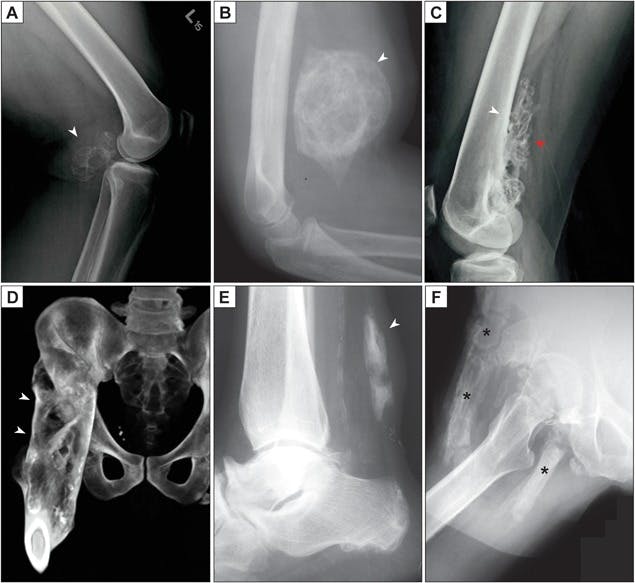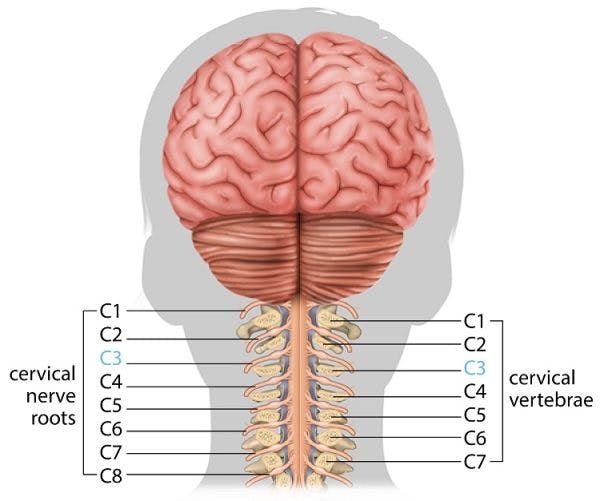After a spinal cord injury, you may experience abnormal bone growth below your level of injury. This is a condition called heterotopic ossification.
This article will explain why heterotopic ossification occurs after spinal cord injury and how to manage it.
Heterotopic Ossification After Spinal Cord Injury
Nearly 20% of spinal cord injury patients experience heterotopic ossification.
After a traumatic event like spinal cord injury, your body’s ability to repair tissue may be abnormal, resulting in heterotopic ossification. This condition is a painful formation of bone in soft tissue areas, leading to a loss of range of motion at the affected joint.
The relationship between your nervous system and bone formation is not fully understood. However, it is known that peripheral neurotransmitters affect osteoblast formation.
Peripheral neurotransmitters are chemical messengers that relay information between the central nervous system and the rest of your body. Osteoblasts are cells that make bone. Therefore, damage to the spinal cord may affect the transmission of signals to the body, resulting in irregular bone formation.
Generally, the more complete your spinal cord lesion (the more it transects the spinal cord), the more likely you are to develop heterotopic ossification. This makes sense because more severe spinal cord damage will make it increasingly more difficult for messages to reach the body.
Symptoms of Heterotopic Ossification After Spinal Cord Injury

photo source: NCBI
It’s most common for heterotopic ossification to develop within the first 3-12 weeks after a spinal cord injury, but it can also develop years later.
Heterotopic ossification is more frequent in men than women, and in higher-level injuries (cervical and thoracic).
Nearly 90% of heterotopic ossification cases in spinal cord injury patients occur at the hips; however, it can also occur at the knees, elbows, and shoulders, depending on what the level of injury is (heterotopic ossification will only occur below the level of injury).
Heterotopic ossification can range from very mild to extremely debilitating.
Common symptoms include:
- Joint and muscle pain
- Decreased range of motion
- Swelling
- Redness or heat
- Ankylosis (severe joint stiffness)
These symptoms can significantly limit your ability to perform everyday activities. In severe cases, the abnormal development of bone at your joints can prevent movement altogether.
Restricted mobility paired with heterotopic ossification can place too much pressure on the skin and result in pressure sores.
Additionally, heterotopic ossification causes the veins to narrow, which can increase the risk of blood clotting.
Now that you understand how dangerous heterotopic ossification can be for spinal cord injury patients, let’s go over effective treatments.
Treatments for Heterotopic Ossification
Treatment for heterotopic ossification after spinal cord injury can be either preventative or reactive.
Preventative treatment focuses on slowing down and preventing further bone growth.
In contrast, reactive treatment focuses on removing the abnormal bone growth to restore mobility.
Effective treatments for heterotopic ossification patients include:
Physical Therapy

Physical therapy for heterotopic ossification will primarily focus on range of motion exercises to preserve movement and reduce contractures.
Depending on how much motor control you have after spinal cord injury, range of motion exercises can be performed passively or actively.
Passive range of motion is when someone else (a caregiver or physical therapist) moves your body for you. This will help stimulate neural connections between your body and spinal cord.
Active range of motion is when you perform a movement on your own.
Although physical therapy will not prevent abnormal bone growth, it can help reduce muscle tightness, spasms, and joint stiffness. That being said, range of motion to the point of pain when you have heterotopic ossification is not recommended, whether passively or actively.
Medications
Once early stages of heterotopic ossification become apparent, doctors will likely prescribe medications to slow bone growth.
Non-steroidal anti-inflammatory drugs (NSAIDs) are often used to prevent the onset or progression of heterotopic ossification after spinal cord injury. They help reduce inflammation and block prostaglandin cells responsible for bone formation.
Additionally, bisphosphonates can help prevent calcium buildup in tissues to prevent the hardening that forms bones.
Radiation
Radiation therapy (radiotherapy) helps prevent abnormal bone growth by suppressing the activity of mesenchymal cells.
Mesenchymal cells are a type of stem cell. They can infinitely differentiate into a variety of different cell types, including bone-forming cells.
It’s suggested that radiotherapy is most effective when it is used sooner after a spinal cord injury than later.
Surgery
Generally, surgery should only be considered if all other treatments prove ineffective.
It’s recommended that surgery for heterotopic ossification be performed after the bone has matured. This typically takes about 6 months.
Surgery before bone maturation may increase the chances of recurring bone growth.
Understanding Heterotopic Ossification in Spinal Cord Injury Patients

Although the link between spinal cord injury and abnormal bone growth has yet to be fully understood, it’s suggested that heterotopic ossification is caused by poor transmission of messages to areas below the level of injury.
Heterotopic ossification after spinal cord injury can be painful and severely restrict movement.
Luckily, there are ways to prevent and treat it to restore mobility.
Hopefully, this article helped you better understand the risks of heterotopic ossification and the importance of intervention. Good luck!











